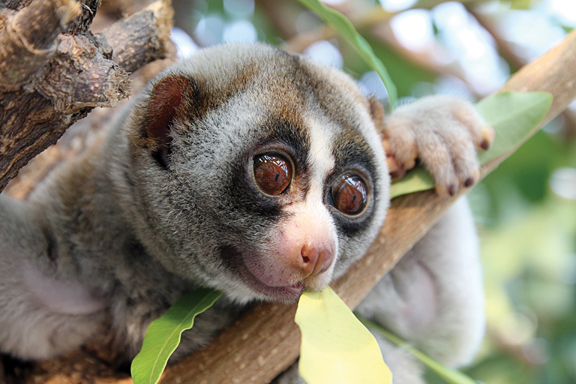Wildlife tour expert Wild Planet Adventures underscores that when you travel abroad to encounter Earth’s most exotic wild creatures is as important as the destination itself.
Backed by over 25 years of experience, Wild Planet Adventures incorporates their destination-specific wildlife knowledge into all of its tours to take into account increased viewing opportunities created by local fruiting seasons; peak activity at natural mineral licks, reappearance of watering holes; regional migrations and local weather patterns and climate changes.
Josh Cohen, founder of Wild Planet Adventures, offers his insights as to the when and why wildlife lovers should travel abroad to maximize opportunities for close encounters, particularly of the rare and elusive kind.
South Africa and Uganda – The Trip: Insider’s Africa: Meerkats, Gorillas and the “Rare 5”
When to Go? Now through October
Why? This is the time that rare nocturnal animals forage during daylight hours creating opportunities for viewing that don’t exist during the rest of the year. In addition, an exclusive four-hour Gorilla trekking permit has been granted to Wild Planet for unprecedented access and opportunities.
From May to October some of Africa’s rarest nocturnal animals forage during the day in the virtually unknown “Green Kalahari”, a savannah south of the better known Kalahari Desert in South Africa. These include rare pangolin (scaly anteater), aardvark and aardwolf, along with two habituated colonies of meerkats and large populations of cheetah, rhino and black-maned lions (Africa’s largest).
Wild Planet Adventures four-hour permit to view Mountain Gorillas in Uganda is an exclusive. Permits issued to other tour companies are for just one hour. Safaris for chimpanzees, tree-climbing lions and the “Big 5” in Queen Elizabeth National Park, mating and courtship rituals of the Kob antelope, and encounters with banded mongoose (cousins of the meerkats) round out the experience. 12-day trips start at $9,998/person. See: http://www.wildplanetadventures.com/destinations/?country=south-africa&trip=insiders-africa-meerkats-gorillas-africa-s-rare-5
Asia – The Trip: Borneo’s Weird & Wonderful Wildlife
When to Go? August through October
Why? It is fruiting season when animals are most visible, including Orangutans, proboscis monkeys, gibbons, tarsiers, slow loris, pygmy elephants and more.
Technically Borneo has no distinct seasons, although there are minor fluctuations in rainfall at different times of year, on different sides of the island. However, there is a distinct fruiting season from late summer into fall. At this time animals are more active as they forage for fruit and conflicts are common as several species vie for the most prolific trees. Wild Planet averages seeing 11 of the 13 primate species on each trip, often up close and for extended periods of time. Between 10-20 wild orangutans are also seen on a typical trip. Pygmy elephants, tiny tarsiers, slow loris, and Borneo’s famous “gliders” – flying lemurs, flying fox, flying squirrel, gliding Draco lizards and gliding frogs are also viewed on special expeditions. Included in the tour is Sipadan Island, one of the “Top 5” snorkel and dive sites in the world, and Maliau Basin, the famous “Lost World” of Borneo, a remote circular basin just recently discovered in the 1990’s. 12-day and 16-day options start at $6,498/person. See: http://www.wildplanetadventures.com/destinations/?country=borneo
Peru – The Trip: Amazon & Machu Picchu
When to Go? August through October
Why? There is peak activity at world’s largest macaw & parrot clay lick.
Tambopata Reserve is home to the world's largest macaw and parrot clay licks where one can see up to 1,000 birds at a time representing five species of macaws and 15 species of parrots and parakeets during the peak activity months of August into October. It is truly one of nature’s greatest events as the sky is covered with flocks of colorful squawking birds. Nearby is Manu Biosphere Reserve, the number one park in the world for biodiversity, visited by less than 3,500 visitors each year. Guided excursions include floating a rainforest river in search of jaguar and over a dozen primate species including the pygmy marmoset, the world's smallest primate. Combined with Machu Picchu, Cusco and the Sacred Valley, where crowds drop off after the summer months, it is a great time to visit Peru. 9-day and 13 day options start at $3,998/person. See: http://www.wildplanetadventures.com/destinations/?country=peru
Brazil – The Trip: On the Jaguar’s Trail: Pantanal & Amazon
When to Go? Now through October
Why? It’s peak viewing time for Jaguars in the Pantanal
Far away from the mayhem of this summer’s Olympics, the Pantanal hosts the largest concentration of jaguars in the world. From July into October Wild Planet Adventures averages 1.5 jaguar sightings per day. During this time it gets increasingly hotter and normal watering holes dry up, forcing the jaguars to hunt caiman on the riverbanks where they are most visible by boat. Hyacinth macaws, giant anteater and an Amazon primate program round out Wild Planet’s tour, available in 11-day and 15-day formats starting at $5,498/person. See: http://www.wildplanetadventures.com/destinations/?country=brazil
India – The Trip: Leopards, Tigers & Palaces
When to Go? November into April
Why? Wild tiger populations are on the rise and rhino poaching has decreased. The parks re-open immediately after the monsoons in November, and tigers, used to empty habitat for months, are at their most visible.
In April of this year, the World Wildlife Fund (WWF) announced officially that wild tiger numbers were on the rise for the first time in over a century. Wild Planet Adventures combines visits to Kanha (the best national park in India for tigers) and Kaziranga NP (a UNESCO World Heritage Site which includes 2,000 rhinos, wild elephants, tigers and more. The first travelers in November benefit from the end of the monsoon season when tigers are most visible. 13-day and 19-day safaris start at $4,998/person. http://www.wildplanetadventures.com/destinations/?country=india
For detailed itineraries, breathtaking wildlife photos and video galleries and booking information for tours worldwide, visit http://www.wildplanetadventures.com/, call 1-800-990-4376 or email [email protected].

